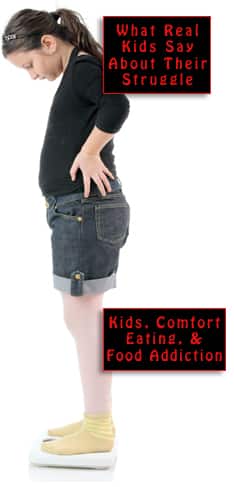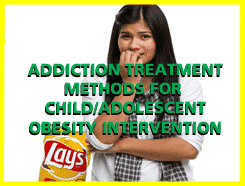
As we’ve been saying over and over, across many different subjects on this blog and stretching for years, childhood obesity is rising at an alarming rate (sadly, not exactly news anymore). And not only in the U.S. It’s also happening across Europe and Central Asia. The World Obesity Federation predicts that between 2020 and 2035, obesity among boys will climb by 61%, while rates among girls are expected to soar by 75%.
Faced with this surge, health experts are asking a difficult question: What is the best way to treat this chronic disease in children? Could GLP-1 medications play a role?
Again, on this blog, we’ve been covering them in terms of research and policymaking, whether they are safe for children to use (and if yes, from what age?), whether there are any promising, successfully used alternatives, and how those aren’t enough but must come as part of the package, combined with lifestyle changes and families working together.
All that said, our content is almost exclusively focused on the U.S. But what’s the approach to rising obesity rates in other parts of the globe, in Europe in particular?
Turns out, it’s pretty much on the same page, though perhaps with a more cautious attitude. And while this might not necessarily constitute earth-shattering news, it shows that we as a global community can work together, or at least try to, if not to eradicate childhood obesity altogether, then at least to alleviate the issue using the same tools.
And those include GLP-1 medications. Sophie Cousins, MIPH, a global health journalist who has reported from more than 20 countries, dives into the subject for Medscape.
The rise of GLP-1 medications
Over the past few years, GLP-1 receptor agonists have gained global attention as effective treatments for obesity. As has been established and backed by research, these drugs act on the brain and the gut to curb appetite, slow digestion, and increase feelings of fullness.
In parts of Europe, medications such as liraglutide (Saxenda), semaglutide (Wegovy), and orlistat (Xenical) are already approved for use in adolescents aged 12 and older. But change may be on the horizon. Novo Nordisk has applied for regulatory approval of liraglutide in children as young as six years old in both Europe and the United States.
Early trial results are promising but mixed. In a phase 3 study, children aged 6 to 12 years who received 3 mg liraglutide plus behavioral therapy for 56 weeks saw a 5.8% BMI reduction, compared with a 1.6% increase in the placebo group. However, 80% of the children on liraglutide experienced gastrointestinal side effects.
These results raise a pressing question: Should children be treated with powerful weight-loss drugs, or should medical professionals and society focus more heavily on prevention?
Concerns over safety and equity
Some experts remain skeptical. Malta, for instance, has one of Europe’s highest rates of childhood obesity, driven largely by poor diet, inactivity, and socioeconomic factors. Renald Blundell, Ph.D., of the University of Malta, is deeply concerned about long-term safety.
He worries about the effects of GLP-1 medications on “growth, puberty, fertility, mental health, and lifelong health.” He stresses the need to monitor for issues such as anxiety and depression.
Dr. Blundell said:
Drugs don’t fix the unhealthy food environment, car dependency, poverty, or school systems that drive obesity. If relied on as the main solution, they risk overlooking prevention.
Still, he acknowledged their potential for children already struggling with severe obesity:
For children already suffering from severe obesity and related illnesses, medication can be life-changing and may give them a better chance to engage with lifestyle changes.
Blundell does not, however, support widespread use in children under 12:
We don’t yet know their long-term safety in young children. There are ethical concerns about medicalizing children, and their high costs and limited access to specialist care could cause inequities.
His conclusion was clear:
The bottom line is that GLP-1 drugs may be appropriate as an adjunct treatment for some children with severe obesity, but their use in 6- to 11-year-olds should be limited, cautious, and tightly monitored. The bigger priority is to change the environment, policies, and support systems so fewer children develop obesity in the first place.
Food policy and the bigger picture
Christina Vogel, Ph.D., a nutritionist and professor of food policy at City St George’s, University of London, echoed similar concerns. She said:
I don’t believe we have sufficient evidence to be able to confidently say they are good to use among children. Children’s bodies are growing, and we don’t know the long-term physical effects.
Vogel emphasized the responsibility of both governments and the pharmaceutical industry to protect children:
We need to get the school food environment right. We need to protect them against heavy marketing of high in fat, sugar, and salt. And we need to promote the availability, accessibility, and appeal of fruit, vegetables, and whole grains.
She also questioned whether children on these drugs might still eat poorly:
Will children continue to eat unhealthy foods because marketing hasn’t disappeared? Could children on these drugs face a higher risk for malnutrition and have more vitamin deficiencies?
Support for cautious use
Some specialists see GLP-1 drugs as a breakthrough, if used carefully. Julian Gomahr, M.D., of Paracelsus Medical University in Salzburg, Austria, noted that treating obesity was “frustrating” before these medications. He said:
We finally have effective medications available that can truly make a difference in treatment — especially when metabolic comorbidities are already present early on and lifestyle interventions have been exhausted. It is crucial that children are treated by an experienced team, particularly during the initial phase of pharmacological therapy.
He also argued that these drugs could reduce long-term healthcare costs but stressed that access must be equitable. He urged policymakers to fund both medications and interdisciplinary obesity centers to ensure children receive the care they need.
No silver bullet
Other experts emphasize that medication is only part of the picture. Annemarie Bennett, Ph.D., of Trinity College Dublin, made it clear: “There is no silver bullet for weight management in childhood.”
If GLP-1 drugs are prescribed, she argued, they should be integrated into a broader plan, such as “food-based and exercise supports, therapies such as cognitive-behavioral therapy, dialectical behavioral therapy, and family therapy may be considered.” We agree!
She explained that overeating often stems from distress and difficult circumstances, such as “difficult relationships at home or in school, experiencing inappropriate methods of discipline, or bereavement.” Addressing these root causes remains critical. This is also something we’ve been discussing on Childhood Obesity News for years (and will continue to do so): displacement.
The road ahead
Regulatory decisions on expanding the use of GLP-1 medications to children under 12, as well as the arrival of daily weight-loss pills in the coming years, could reshape treatment.
But for now, the debate continues: how to balance access to promising new drugs with prevention, therapy, and long-term strategies to protect children’s health.
Your responses and feedback are welcome!
Source: “Should Children Be Prescribed Anti-Obesity Drugs?,” Medscape, 9/26/25
Source: “Liraglutide for Children 6 to <12 Years of Age with Obesity — A Randomized Trial,” The New England Journal of Medicine, 9/10/24
Image by Yan Krukau/Pexels

 FAQs and Media Requests:
FAQs and Media Requests: 











